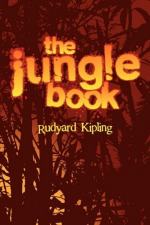|
This section contains 272 words (approx. 1 page at 400 words per page) |

|
Like Aesop's Fables, the stories of The Jungle Book all seem to have a moral.
Kipling shows how Mowgli, Toomai, and various animals confront danger, learn to overcome it, and in the process become aware of the diversity and meaning of life. The central characters, whether they be human or animal, learn much about the evil of the jungle and of human beings, but they also learn about goodness and develop their own values.
Order and wisdom are predominant values found among the animals.
Kipling's narrative reflects nineteenthcentury attitudes in its depiction of nature as possessing a moral order that is superior to the human order. While ignorance and violence abound in the jungle, these traits in humans seem much worse, because humans have the power to choose to do good or evil.
"The White Seal" is Kipling's most didactic piece. In it he condemns hunters...
|
This section contains 272 words (approx. 1 page at 400 words per page) |

|




